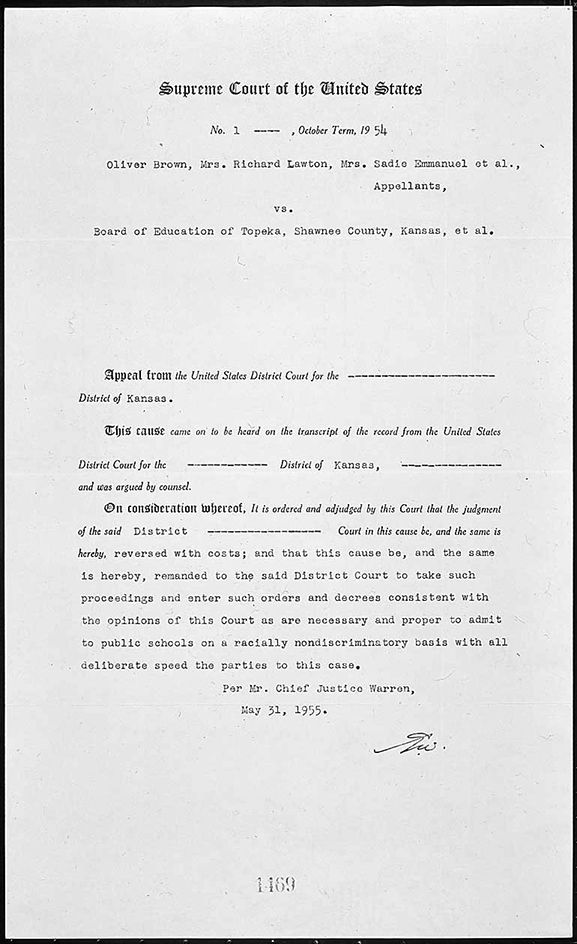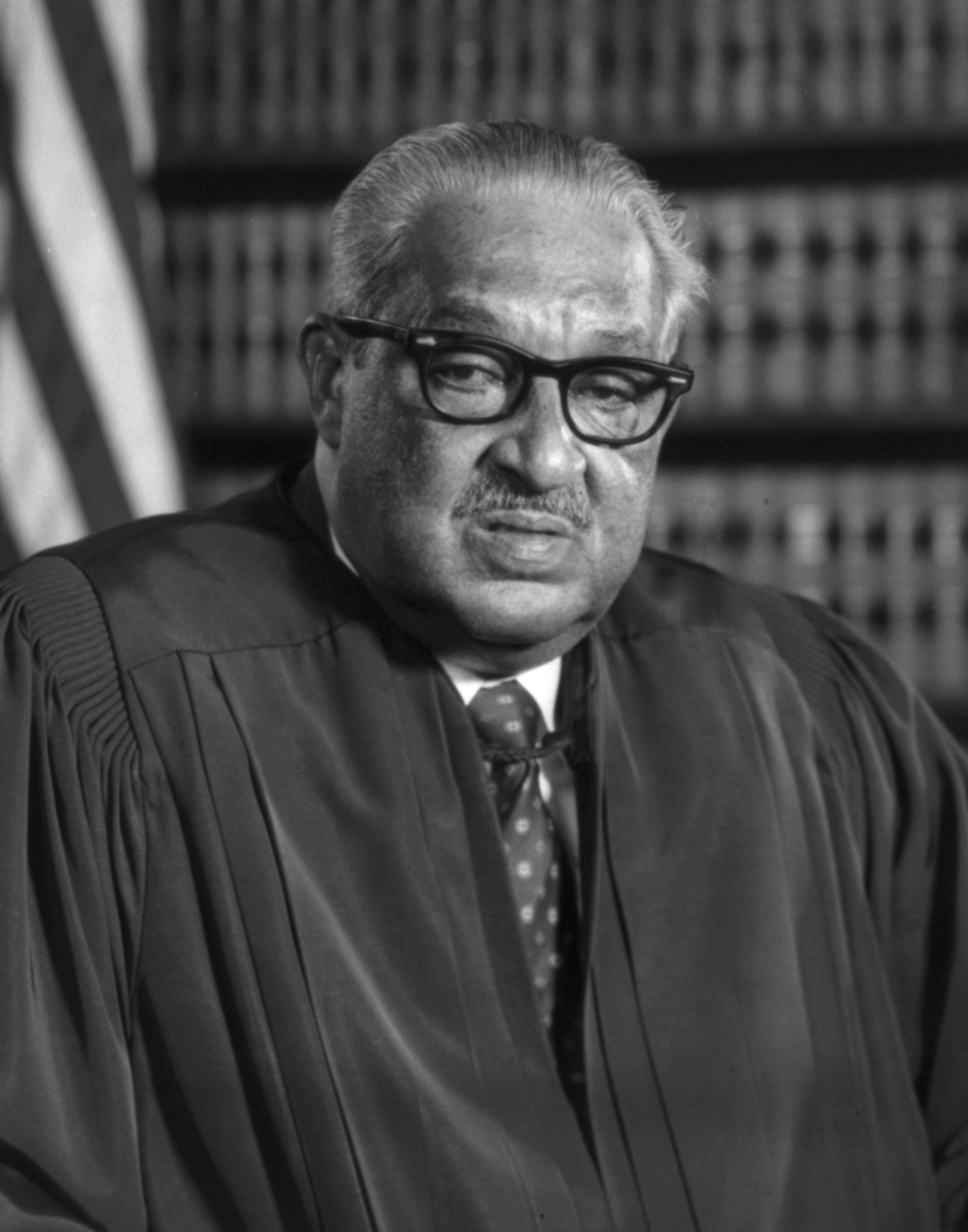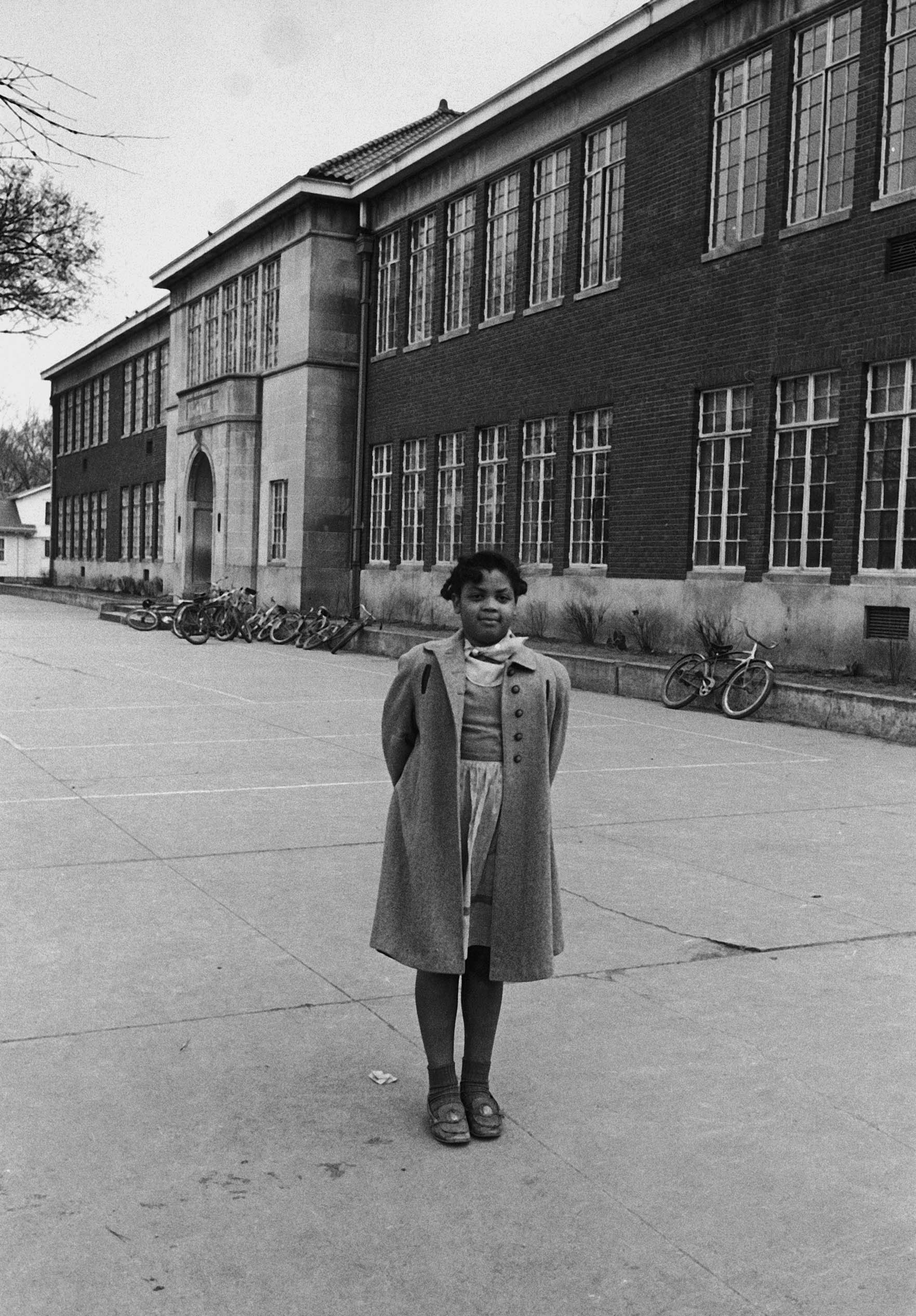Brown v. Board of Education of Topeka was a case decided in 1954 in which the Supreme Court of the United States declared racial segregation in public schools to be unconstitutional. The full name of the case is Brown et al. v. Board of Education of Topeka, Shawnee County, Kansas, et al. The court decided the case together with several others that dealt with the same issue. The court heard all of the cases at the same time, but the name of the Brown case is almost always used in referring to the decision.

The Supreme Court’s decision advanced the legal movement to desegregate U.S. society. At that time, many areas of the United States, especially in the South, were racially segregated. In segregated areas, Black people and white people went to separate schools and lived in separate neighborhoods. They rode in separate parts of buses and drank from separate drinking fountains. State laws called Jim Crow laws required or permitted such separation. An 1896 Supreme Court decision in the case of Plessy v. Ferguson had permitted separate railroad cars or trains as long as they were equal in nature. The 1896 decision established the “separate but equal” principle. This principle later was used to uphold other kinds of segregation in the United States.
The National Association for the Advancement of Colored People was guided by its chief lawyer, Thurgood Marshall. The group decided to use the Brown case and its companion cases to challenge the “separate but equal” principle. In the Brown case itself, Oliver Brown, an African American railroad worker in Topeka , Kansas, sued the Topeka Board of Education. The board had refused to allow Linda Brown, his daughter, to attend Sumner Elementary School, an all-white school near her home. The other cases involved similar suits by Black parents from other parts of the country. Marshall attacked the “separate but equal” rule by arguing that segregation harms minority students. He said the rule made the students feel inferior and interfered with their ability to learn.

In a unanimous decision, the court agreed with Marshall. It declared that separate educational facilities could never be equal. Therefore, segregated schools violated the 14th Amendment to the Constitution of the United States, which forbids the states to deny any citizen the rights granted by federal law.

By 1960, however, several Southern states still had no Black students enrolled in public schools with white students. Some progress was made in these states later in the 1960’s, after a series of civil rights protests and the passage of federal laws desegregating other public facilities. In a number of cases, courts used the principles that have been established in the Brown decision to require or uphold the desegregation of public facilities other than schools.
In the 1970’s, courts in the United States ordered many cities to begin busing students between neighborhoods to integrate public schools. Court-ordered busing plans helped integrate many schools. However, in the 1990’s, several Supreme Court decisions limited the cities’ obligations to use busing. The plans were largely phased out in the following years. Today, many Black students still attend segregated schools.
